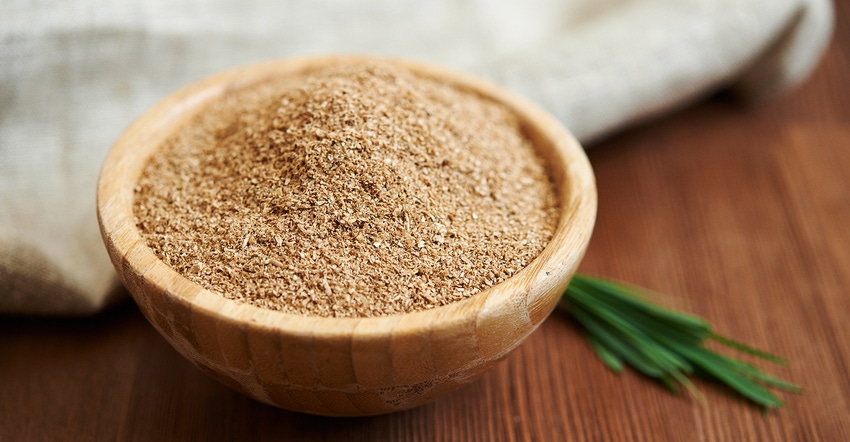Processing techniques affect XOS effects
Research shows prebiotic ingredients, particularly XOS, produced via different processes result in distinct compositions, benefits and dosage.

Mounting research has shown that a healthy microbiome is key to overall human health, affecting everything from cognitive function1 to mood,2 skin health3 and immune health.4 Probiotics rose to fame as a necessary component to maintaining good digestive health. In the 1980s, yogurt boomed in popularity due to building awareness of the benefits of probiotic bacteria. However, in recent years, prebiotics have experienced a surge in popularity.
Prebiotics offer the advantage of stability, making them suitable for a variety of formulations and delivery formats. Certain prebiotics also have properties such as low water activity, so they can easily be combined with probiotics for synbiotic advantages.
Prebiotics are not the same.
Fructooligosaccharides (FOS) are popular prebiotics comprised of oligomers of D-fructose residues. Galactooligosaccharides (GOS) are another common prebiotics derived from lactose and resemble the prebiotics in mother’s breast milk. FOS and GOS are effective in relatively large doses, which may cause digestive distress, especially in those not used to taking prebiotic and fiber products. Enter xylooligosaccharides (XOS), which are oligomers of a type of sugar, xylose. Some foods contain XOS prebiotics, such as bamboo shoots, fruits, vegetables, milk and honey; however, the amount of XOS contained in these foods is limited. Therefore, supplementation with clinically supported ingredients is desirable for consumers looking to boost intake of these prebiotics and ensure maximum effectiveness with minimal digestive distress.
Science behind XOS prebiotics.
XOS are mixtures of oligosaccharides formed by xylose residues linked through beta (1 to 4) linkages. The number of xylose residues involved in their formation can vary from two to 10, and they are known as xylobiose, xylotriose and so on. XOS products can be derived from different starting materials. Depending upon the xylan sources used for XOS production, the structures of XOS vary in several ways: degree of polymerization (DP), monomeric units, types of linkages and side chain modifications. These variations can have a meaningful impact on the prebiotic activity of the XOS. For example, due to its structural properties, XOS produced from oat bran could induce growth of Lactobacillus acidophilus.5,6 Arabinoxylan, a type of cellulose obtained from the outer shell of wheat, rye, rice, and other cereal grains, is less amenable to fermentation by Bifidobacteria and Bacteriodes.7
Research has also demonstrated that the degree of polymerization (DP) of XOS has a significant impact on its bifidogenic ability.8 Since XOS materials differ in composition, this can result in different dosage requirements and selectivity in terms of gastrointestinal (GI) fermentation. While all XOS prebiotics help rebalance the microbiome, the effective dose and degree of effect may vary. Due to these variations, XOS clinical trials cannot be generalized across the board. In other words, health and product claims can only be made if formulating with the specific XOS used in the relevant clinical trials. It is important to note, though, that claims can only be made from human clinical studies completed on a specific XOS and cannot be borrowed from literature.
Jennifer Gu is vice president of research and development (R&D) AIDP Inc.
References
Cowan C, Dinan T, Cryan J. “Annual Research Review: Critical windows - the microbiota-gut-brain axis in neurocognitive development.” J Child Psychol Psychiatry. 2019 Nov 26. DOI: 10.1111/jcpp.13156
de la Fuente-Nunez C et al. “Neuromicrobiology: How Microbes Influence the Brain.” ACS Chem Neurosci. 2018;9(2):141-150.
Alexander H et al. “The role of bacterial skin infections in atopic dermatitis: expert statement and review from the International Eczema Council Skin Infection Group.” Br J Dermatol. 2019 Nov 1. DOI: 10.1111/bjd.1864
Xu H et al. “The Dynamic Interplay between the Gut Microbiota and Autoimmune Diseases.” J Immunol Res. 2019;2019. DOI 10.1155/2019/7546047
Van Laere K et al. “Fermentation of plant cell wall derived polysaccharides and their corresponding oligosaccharides by intestinal bacteria.” J Agric Food Chem. 2000;48(5):1644-52.
Jaskari J et al. “Oat beta-glucan and xylan hydrolysates as selective substrates for Bifidobacterium and Lactobacillus strains.” Appl Microbiol Biotechnol. 1998;49(2):175-81.)
Van Craeyveld V et al. “Structurally different wheat-derived arabinoxylooligosaccharides have different prebiotic and fermentation properties in rats.” J Nutr. 2008;138(12):2348-55. DOI: 10.3945/jn.108.09436
Bu X Et al. “Proliferatation and Metabolizing Process of Bifidobacterium in Xylo-oligosaccharides Culture Medium.” Chemistry and Industry of Forest Products. 2007;27(3):11-14
About the Author(s)
You May Also Like






.png?width=800&auto=webp&quality=80&disable=upscale)